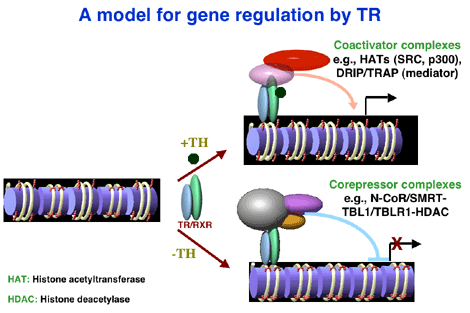Figure 2
A model for transcriptional regulation by TRs
TR functions as a heterodimer with RXR. In the absence of TH, the heterodimer represses gene transcription through the recruitment of corepressor complexes containing the corepressor such as N-CoR or SMRT and histone deacetylase (HDAC). This leads to histone deacetylation and transcriptional repression. When TH is present, the corepressor complexes are released and coactivator complexes containing coactivators such as SRC, p300, and/or the DRIP/TRAP coactivator complex are recruited. The DRIP/TRAP complex may contact RNA polymerase directly to activate gene transcription. On the other hand, the SRC and p300 complexes may function through chromatin modification as they possess histone acetylase activity. In addition, transcriptional activation is associated with chromatin disruption, which may be due to the recruitment of chromatin remodeling machinery by TR/RXR.

 BACK TO TOP
BACK TO TOP